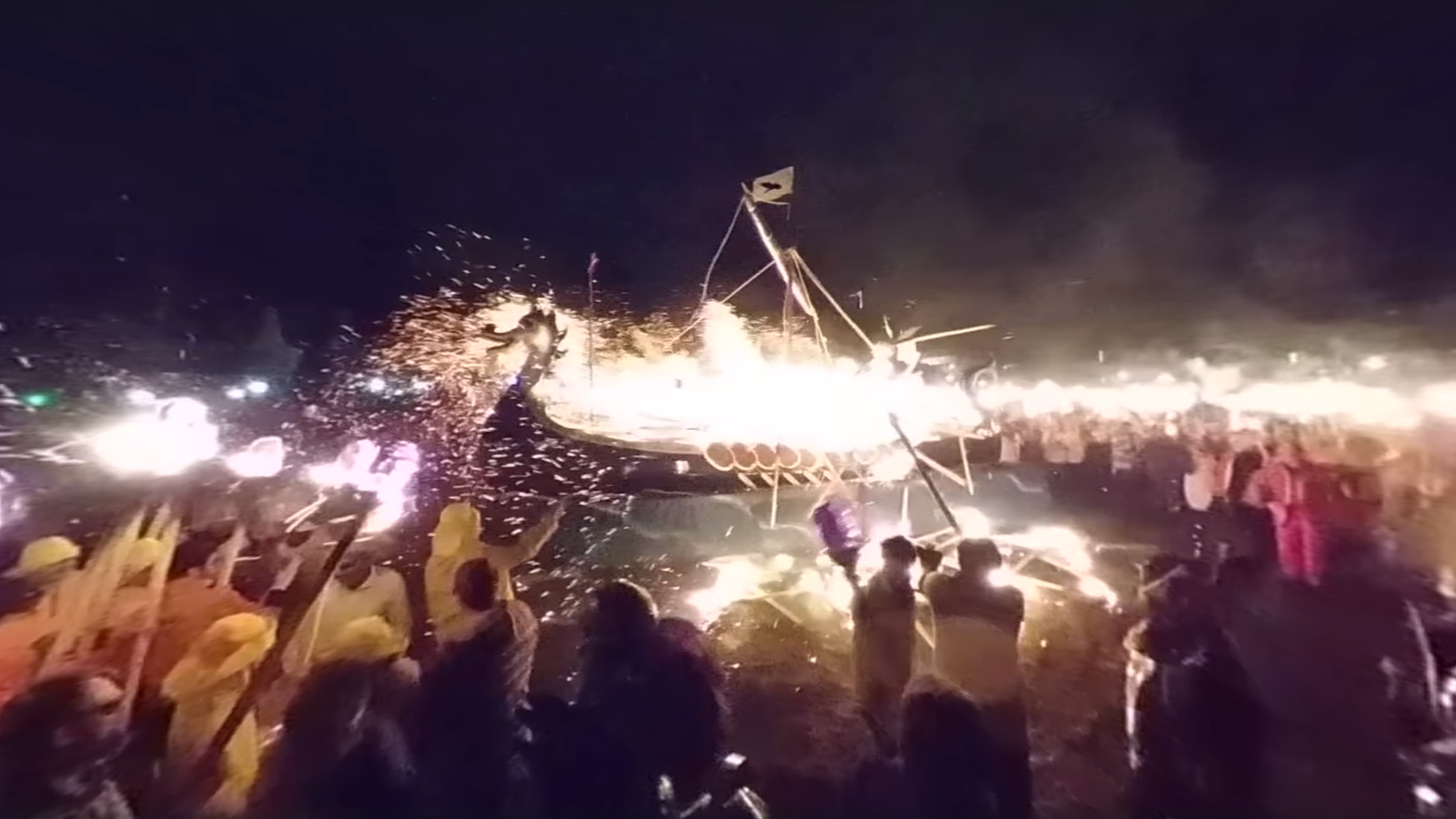Up Helly Aa: The songwriter who introduced Vikings to Shetland's fire festival
- Published
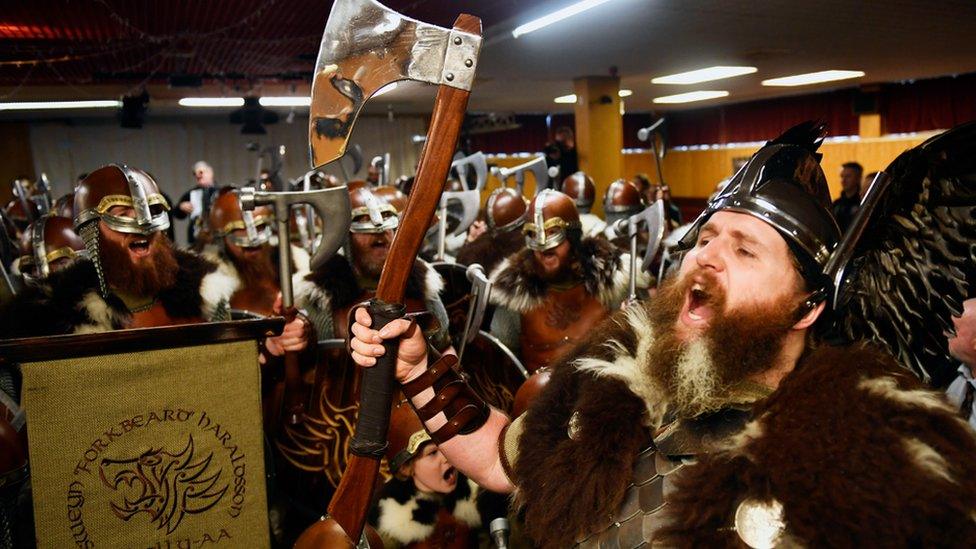
Shetland's Up Helly Aa festival has a series of traditional songs
Flaming torches, longboats and Viking squads are an integral part of Shetland's fire festivals - but that wasn't always the case. The blueprint for the modern-day Up Helly Aa was created by the poet behind one of the event's traditional songs.
Up Helly Aa is the biggest fire festival in Europe, held on the last Tuesday in January to remember the Vikings who ruled the Shetland islands 1,000 years ago.
The Guizer Jarl and his squad take part in a series of marches and visits which lead up to the culmination of the day's events - a torchlit parade which ends with the burning of a replica Viking long ship.
But the event was a more unruly occasion when it began in the 1820s.
In its early days, people in disguise would drag burning tar barrels through the streets of Lerwick.
"People were setting things on fire and smashing windows," explains Up Helly Aa historian Brydon Leslie.
"They thought it was fun - although I'm sure the owners of the windows didn't think that."

A Viking galley is burned as part of the celebrations
The event tied into Yule traditions as a way to mark the transition into a new year.
"It was going along people's houses, eating, dancing and drinking - it was nothing to do with Vikings at all," said Brydon.
Burning tar barrels were banned in 1874, with torches being adopted from 1881 onwards.
Then Lerwick poet JJ Haldane Burgess began to shape Up Helly Aa into the event we recognise today.
He published a novel, The Viking Path, in 1894.
Brydon described this work as the "blueprint" for what the festival would become in the future.

BBC Scotland's Marc Ellison captured the atmosphere of the 2018 celebrations in a 360 video, external.
Allow YouTube content?
This article contains content provided by Google YouTube. We ask for your permission before anything is loaded, as they may be using cookies and other technologies. You may want to read Google’s cookie policy, external and privacy policy, external before accepting. To view this content choose ‘accept and continue’.

The novel features the Guizer Jarl and a lot of the imagery which is now part of the Up Helly Aa celebrations.
"Haldane Burgess was really into Shetland's Norse past. From then on, Up Helly Aa becomes increasingly Viking-ised," said Brydon.
His input led to one of the festival's most famous sights - the burning of a replica Viking galley.
Watch as islanders on Shetland sing a traditional song during the Up Helly Aa festival
He also wrote the Up Helly Aa Song, which is performed at schools, in village halls, and during the burning of the longship.
It was introduced in 1897, initially to the tune of the American abolitionist folk song, John Brown's Body.
The song was influenced by Haldane Burgess' involvement in socialist politics.
"His idea of the Viking ideal and Marxism seemed to dovetail - he sees the Viking as a freedom fighter and standing up for rights," explains Brydon.
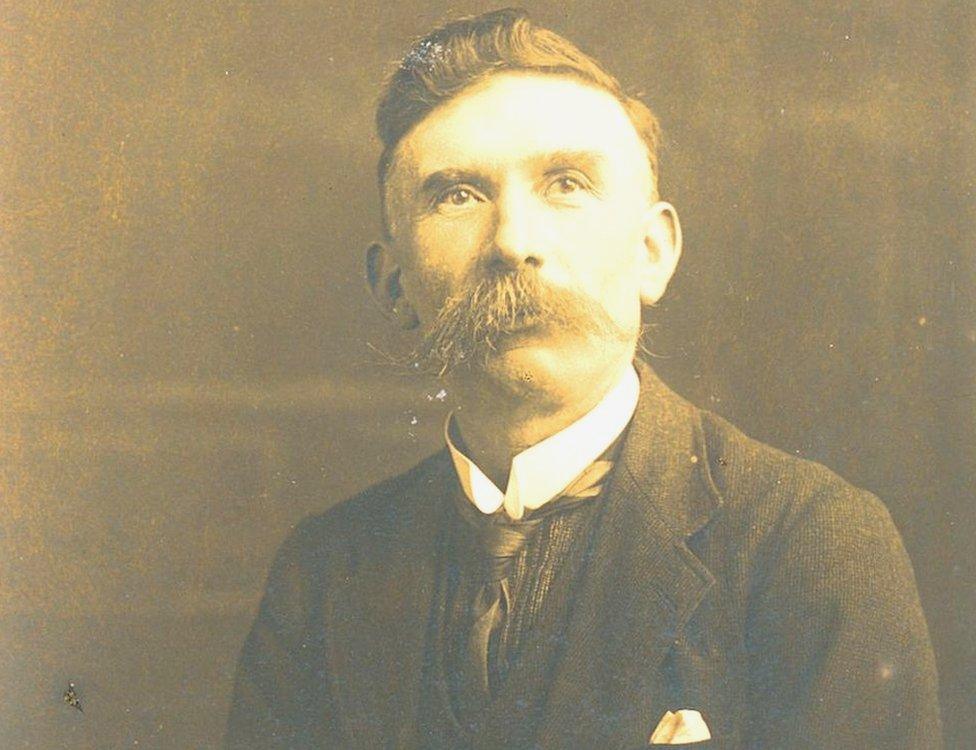
Poet JJ Haldane Burgess wrote the song which was first introduced in 1897
However, the song was not universally popular at first. Local newspapers described it as a "funeral dirge", and a decision was made to write new music.
This was composed ahead of the 1921 festival by local publisher and author Thomas Manson. His tune has been performed ever since by the Lerwick Brass Band.
The band's secretary, Dougie Johnston, said: "They fit together perfectly - they're the same rhythm and the style of music is the same.
"Apparently Manson was ill and thinking about music - the tune came to him while he was in his bed."
In recent decades, parts of the Up Helly Aa Song have become merged with a second traditional tune, The Galley Song.
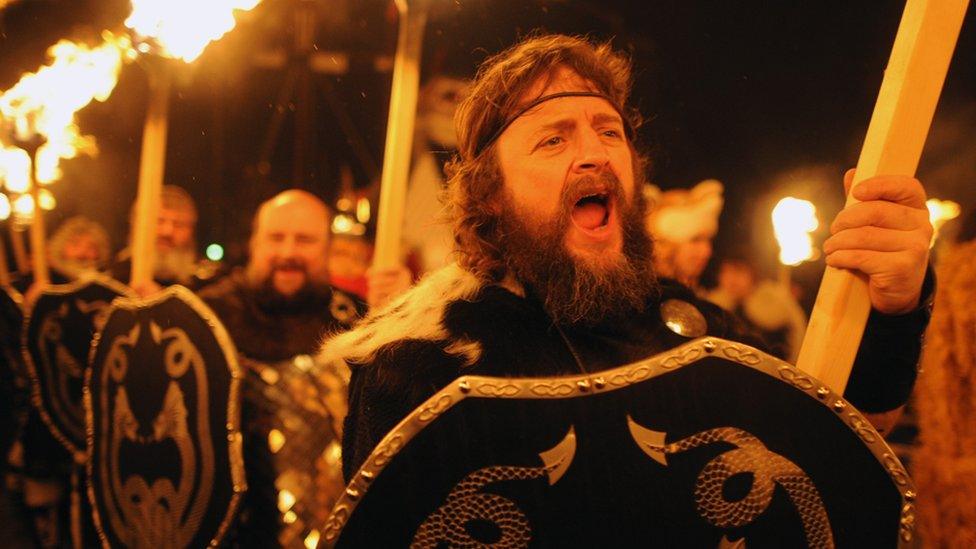
Dougie is in no doubt that the music will continue to evolve in the future.
"The Galley Song previously had its place and was played separately - what happens now wouldn't have happened in the old days.
"Even the thought of playing the Up Helly Aa Song at the morning procession would have been sacrilegious - the words are: 'Up Helly Aa has come'. Well, it hasn't - not until the evening procession," Dougie explains, laughing.
"That's become perfectly acceptable, and no doubt there'll be further changes."
The lyrics and the new music were printed to help visitors and locals who attended the festival in 1921.
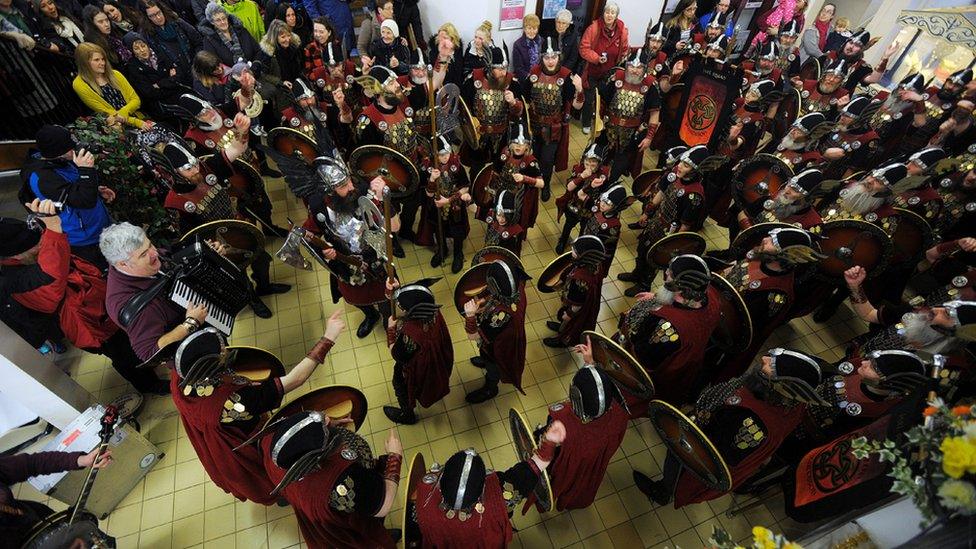
Shetland Library recently uncovered an original copy by chance among their collections.
Catherine Jeromson, who found it inside a donated book, said it had "stood the test of time".
So what would Haldane Burgess have made of Up Helly Aa today?
Brydon believes the festival is "honouring" his vision.
"If he were able to see the galley burning, he would be proud to see that continuing and that it's still alive."
Up Helly Aa takes place on the final Tuesday of January.
- Published29 August 2018
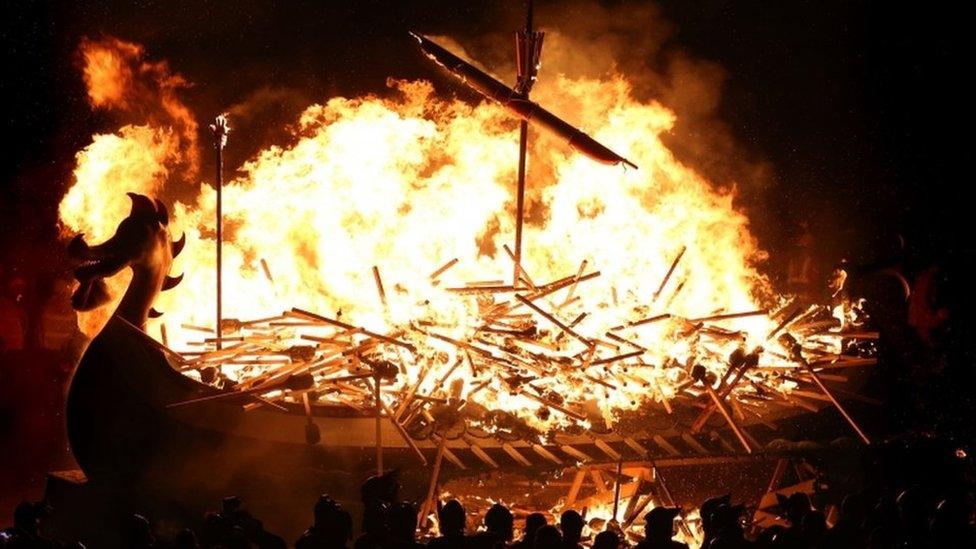
- Published31 January 2018
